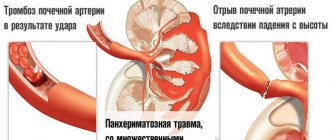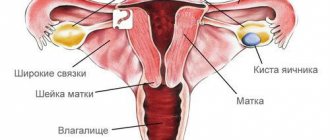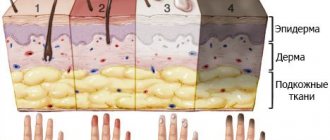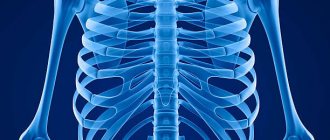The norm is considered to be a general body temperature of +36 to +37°C. A periodic decrease to +35.5°C is possible with hypotension, hypothermia and some infections. Usually this condition normalizes on its own over time. But there are situations where hypothermia is very dangerous.
Nervous and physical exhaustion
High physical activity, prolonged stress, lack of sleep, poor diet and strict diets often lead to a deficiency of the body’s energy resources. As a result: metabolism slows down, blood circulation slows down and the temperature drops below normal by 1-2 degrees. The pathological condition is accompanied by significant weight loss, apathy, weakness, fatigue, depressed mood or increased nervous excitability. There may be frequent headaches and decreased mental abilities. The person becomes distracted and inhibited. There is a weakened immune system and hypovitaminosis.
With physical and nervous exhaustion, body temperature steadily decreases to +35–35.5°C. The condition is accompanied by chills even in warm weather. This pathology is usually not life-threatening, but it is an alarming sign that requires urgent lifestyle changes.
Reduced body temperature
What are the normal values?
The easiest way to determine the fact of low body temperature is with a thermometer. When measuring the temperature in the armpit, make sure that the skin is dry, because when moisture evaporates, it takes away some of the heat, and this causes false readings. Keep the thermometer under your arm for about three minutes. If you get a result of less than 35.5 degrees, you can talk about hypothermia.
Causes of decreased body temperature
One of the normal variants is hypothermia, which is associated with exposure to low temperatures. As soon as a person enters a warm room, normal body temperature is restored. However, we all know that even short hypothermia may well create conditions suitable for pathogens to penetrate the body and further reproduce. Therefore, such hypothermia should be avoided.
Poor nutrition
Chemical reactions constantly occur in the human body, heat is released, due to which normal body temperature is maintained. But if metabolic processes are slowed down, a lack of energy occurs, which leads to a drop in temperature. Therefore, one of the causes of hypothermia is insufficient nutrition. The body simply does not receive nutrients from which energy can be extracted and used to maintain a normal temperature. In addition, the fat layer, which is designed to warm our body, is reduced. Usually, after some time after normalization of nutrition, the chilliness goes away.
Endocrine diseases
Hypothermia is a symptom of some endocrine disorders, primarily hypothyroidism, a weakening of the thyroid gland. The thing is that thyroid hormones stimulate metabolism, and without them all biochemical reactions proceed very slowly. Therefore, in conditions of their deficiency, the body cannot obtain enough energy, and the body temperature decreases. You should contact an endocrinologist if, in addition to hypothermia, you notice
- chilliness,
- causeless increase in body weight,
- constipation,
- weakness, apathy, drowsiness,
- dry skin, dull hair,
- memory impairment.
Diabetes mellitus is another endocrine disease that is accompanied by hypothermia. In diabetes, the temperature may decrease due to the fact that glucose oxidation does not occur, and an energy deficit also occurs. In addition to chilliness, patients complain of unquenchable thirst, frequent urge to urinate, and impaired sensitivity in the limbs.
Liver failure
Our liver stores a lot of carbohydrates in the form of glycogen. This reserve comes into use when nutrients are not supplied for a certain time, and energy needs to be taken from somewhere. So, with liver failure, glycogen is practically not stored, so there is a lack of energy resources. This is what causes hypothermia.
Anemia
Anemia also leads to a slowdown in metabolism and a decrease in temperature, since this condition is accompanied by a lack of oxygen in the tissues, and without it, the oxidation of nutrients and the extraction of sufficient energy from them is impossible. In addition to hypothermia, general anemia is characterized by the following symptoms:
- dizziness, sometimes headaches,
- weakness, apathy, fatigue,
- dyspnea,
- cardiopalmus,
- "flies" before the eyes,
- numbness of the limbs,
- pallor, skin, sometimes blueness of the fingertips.
Neurological disorders
A drop in body temperature is caused by disruption of the nervous system. This is especially often observed with spinal cord injuries or other pathological conditions, when paralysis of large muscles occurs with their subsequent atrophy. It is in the muscles that the breakdown of the diseased amount of nutrients and the release of energy occurs, therefore, when these “energy stations” fail, hypothermia occurs.
Oncology
One of the symptoms of cancer is a change in temperature, not only upward, but also downward. Hypothermia is usually observed with tumors of the hypothalamus, since it is in this part of the brain that the center for regulating body temperature is located. Accordingly, when a growing tumor affects the hypothalamus, its normal function is disrupted. At first, there may be no headaches, nausea or dizziness; these symptoms usually appear in the later stages of the disease. The very first sign is hypothermia, which is why it cannot be ignored.
Other factors
Some conditions are characterized by dilation of blood vessels in the skin, as a result of which blood rushes to the skin and increases heat transfer. This mechanism underlies hypothermia in psoriasis, extensive burns and inflammatory processes over large areas of the skin. As soon as the underlying disease is eliminated, the body temperature will return to normal.
Taking certain medications, for example, an overdose of antipyretic drugs, sometimes leads to a decrease in body temperature. Hypothermia is also provoked by sedatives (benzodiazepines, barbiturates) and narcotic painkillers.
What to do if you have hypothermia?
Firstly, if you find that your body temperature is below normal, you should contact the specialists of our clinic. To get started, an appointment with a therapist is enough. It is important to understand that hypothermia is not an independent disease, it is only a symptom of much deeper disorders. Therefore, more research is required to determine the root cause of this condition. Based on blood and urine tests, the doctor will already make assumptions about what disease could lead to hypothermia. In the future, additional consultations with an endocrinologist, neurologist or oncologist may be required.
But still, low body temperature is dangerous in itself, because in such conditions the body cannot function normally and properly resist infections. Therefore, with hypothermia, the risk of infectious diseases increases significantly. So while you are treating the underlying disease, the symptom of which is low temperature, try to avoid hypothermia: dress warmly, drink warm teas, herbal infusions and compotes.
Post-viral syndrome
In this case, the body temperature usually stays around +35.5°C or +35°C for several days. In the fight against infections, the body spends a lot of internal resources, suffers from the consequences of intoxication and microbial aggression, which is why many functions, including thermoregulation, are disrupted. The early period of recovery is often accompanied by a decrease in temperature. The condition is accompanied by other symptoms: physical weakness, bad mood, drowsiness, decreased concentration. Shortness of breath may occur, worsening with exertion and stress. Children, adolescents, and people with chronic vascular and central nervous system diseases are susceptible to pathology.
If the thermometer is above 36.6 degrees C
Situations with low temperatures in clinical practice are much less common than indicators above 36.6 degrees C. Many modern people have come to regard moderately elevated indicators (low-grade fever) as a necessary condition for the body’s fight against infection. That is, if the temperature does not exceed 380, today there is no rush to bring it down, realizing that as the degrees rise, the body’s protective functions improve.
Still, you should not sit idly by at elevated (above 37.1) temperatures. This is a signal about a developing inflammatory process, which means that the body needs to help cope with it:
- if there are obvious signs of a cold, provide plenty of warm drinks, rinse the throat and nose with a saline solution, and ventilate the patient’s room;
- if you have acute pain (head, stomach, ears), consult a doctor;
- If there are signs of intoxication (nausea, vomiting, diarrhea), call an ambulance.
In a situation where the temperature remains at a low-grade level for weeks or months, it is also necessary to see a doctor and undergo an examination, since tuberculosis, endocrine or tumor diseases may be hidden behind this symptom.
If the temperature is above 36.6 degrees, but does not exceed 37.10 C, there is no reason to worry.
Low blood glucose
Hypoglycemia due to prolonged hunger and excess insulin provokes energy starvation of the brain, slows blood circulation and metabolism. As a result of glucose deficiency, physical weakness develops, dizziness, and attacks of hunger. With a prolonged lack of sugar in the blood, coordination of movements is impaired, asthenia sets in, the body breaks out in cold sweat, and body temperature drops to +35°C. In the absence of outside help to the body, fainting and hypoglycemic coma are possible. People of any age are susceptible to pathology; insulin-dependent patients suffer more often than others.
Help with hypothermia
Immediate measures: exposure to heat, elimination of hunger, neutralization of toxins. A person with hypothermia is advised to drink hot tea, take a bath, and wrap himself in a thick blanket. In critical conditions, hospitalization is required.
The exact causes of the pathological symptom are determined by the therapist or doctors of other profiles. Diagnostics includes biochemical and hormonal blood tests, ECG, ultrasound of internal organs, computed tomography or MRI of the spine and brain. A complete medical examination helps to identify the most unexpected causes of low temperature.
Drug therapy depends on the established diagnosis. These can be antibiotics, immunomodulators, antidepressants, nootropics. To consolidate the results of treatment, the doctor usually recommends purchasing vitamin and mineral complexes.
Internal hemorrhage
Internal bleeding may be caused by damage to blood vessels. In turn, it can be caused by the progression of peptic ulcer disease, tumor growth, disturbances in the functioning of the cardiovascular system, and increased fragility of the vascular walls.
Also, internal bleeding can be caused by problems in the endocrine system and diseases associated with metabolism.
The chronic form of internal hemorrhage can occur without significant symptoms.
A feeling of fatigue, characteristic diseases that may be indicated by the patient's medical history, pale skin and drowsiness may be signs of hemorrhage. In case of injury or bruises of internal organs, hypothermia indicates the need for specialist help. If the patient loses consciousness, you should not hesitate under any circumstances; urgent hospitalization is necessary.










